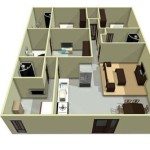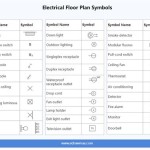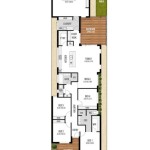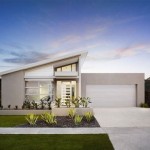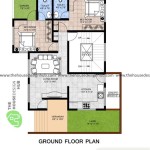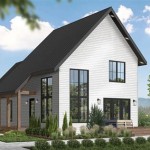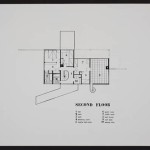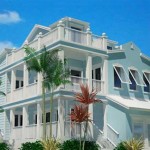3D House Plan Photos: Bridging the Gap Between Blueprint and Reality
For prospective homeowners, builders, and architects, understanding the intricacies of a house plan can be challenging. Traditional 2D blueprints, while technically accurate, often fail to convey the spatial relationships and overall aesthetic of a design. This is where 3D house plan photos come into play, offering a powerful visualization tool that bridges the gap between technical drawings and the realized structure.
3D house plan photos are digitally generated images that depict a proposed house design in a realistic, three-dimensional format. Unlike simple 3D models, these photorealistic renderings incorporate textures, lighting, and landscaping, providing a lifelike representation of the finished product. This allows stakeholders to experience a virtual walkthrough of the house, gaining a comprehensive understanding of its layout, dimensions, and overall aesthetic appeal.
The benefits of utilizing 3D house plan photos are multifaceted. For clients, these visuals offer a tangible representation of their future home, empowering them to make informed decisions regarding design modifications and material selections. This immersive experience can significantly reduce misunderstandings and ensure that the final product aligns with their vision. Furthermore, visualizing the space in 3D can help clients anticipate potential furniture placement and optimize the functionality of each room.
From a builder's perspective, 3D house plan photos serve as invaluable communication tools. They facilitate clear and concise discussions with clients, subcontractors, and other stakeholders, minimizing the risk of errors and misinterpretations. By providing a shared visual understanding of the project, these images can streamline the construction process and improve overall efficiency. The ability to identify potential construction challenges early on, through detailed visualization, allows for proactive problem-solving and cost-effective solutions.
Architects leverage 3D house plan photos to refine their designs and explore various aesthetic options. The ability to experiment with different materials, lighting schemes, and landscaping elements within a virtual environment allows for greater creative freedom and precision. This iterative process leads to more polished and well-considered designs that effectively address the client's needs and preferences. Furthermore, these visuals serve as powerful marketing tools for showcasing their portfolio and attracting new clients.
The creation of 3D house plan photos involves specialized software and expertise. Skilled 3D artists and architectural visualizers use sophisticated programs to translate 2D blueprints into detailed 3D models. These models are then textured, lit, and rendered to produce photorealistic images that accurately represent the intended design. The level of detail and realism can vary depending on the project requirements and budget.
Several factors influence the cost of producing 3D house plan photos. The complexity of the house design, the level of detail required, and the number of images requested all contribute to the overall cost. Additionally, the experience and reputation of the 3D artist or visualization studio can also impact pricing. However, the investment in high-quality 3D visuals is often justified by the improved communication, reduced errors, and enhanced client satisfaction they provide.
Beyond static images, 3D house plan technology extends to animated walkthroughs and virtual reality experiences. These interactive tools allow clients to virtually explore the house, navigating through rooms and experiencing the space as if they were physically present. This immersive technology further enhances the understanding of the design and empowers clients to make confident decisions.
The evolution of 3D house plan photos continues to advance, driven by technological innovations and increasing demand for realistic visualizations. As software and rendering techniques become more sophisticated, the quality and affordability of these visuals are expected to improve. This will further democratize access to powerful design tools and enhance the communication process between clients, builders, and architects.
Choosing the right provider for 3D house plan photos is crucial. Consider the provider's portfolio, experience, and communication style. Request examples of their previous work and ensure they understand your specific needs and expectations. A clear understanding of project timelines and deliverables is essential for a successful collaboration.
3D house plan photos have become an indispensable tool in the architectural and construction industries. Their ability to transform complex technical drawings into easily understandable visuals has revolutionized the way homes are designed, built, and experienced. By providing a tangible representation of the future, these images empower clients, builders, and architects to collaborate effectively and achieve successful project outcomes.
The integration of 3D house plan photos with other technologies, such as Building Information Modeling (BIM), further enhances their utility. BIM provides a comprehensive digital representation of a building, encompassing not only its geometry but also information about its components, materials, and performance characteristics. Integrating 3D visualizations with BIM data creates a powerful platform for analysis, collaboration, and informed decision-making throughout the building lifecycle.

How Much Do 3d House Plans Cost Faqs Answered Cedreo

3d Floor Plans

How Do You Make A 3d Floor Plan

3d Floor Plans

How Much Do 3d House Plans Cost Faqs Answered Cedreo

3d House Plans Floor Blueprints The Designers

20 Designs Ideas For 3d Apartment Or One Y Three Bedroom Floor Plans Home Design Lover House Plan 3

Modern 3d House Plan Designs 2024 Interior Decor

3d Floor Plans Renderings Visualizations Fast Delivery

Brilliant 3d Floor Plan Ideas Engineering Discoveries

